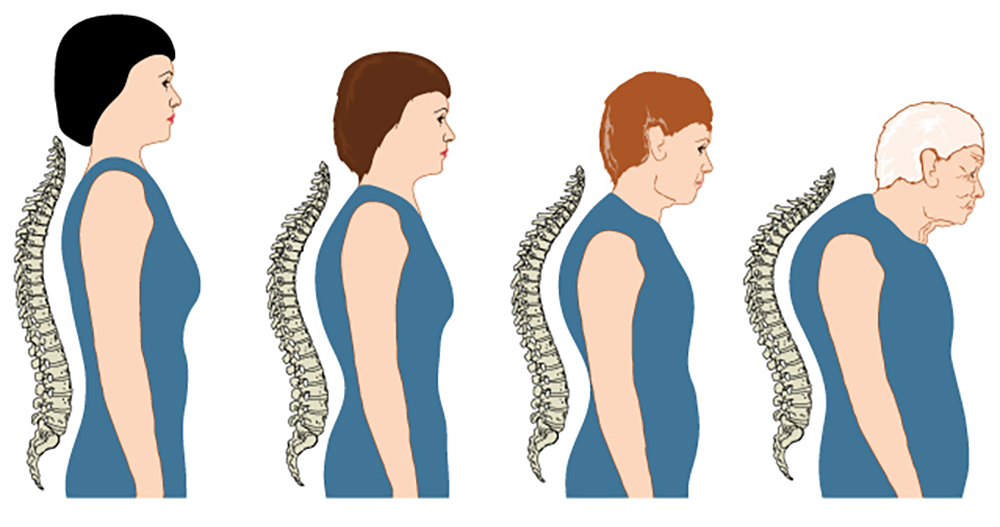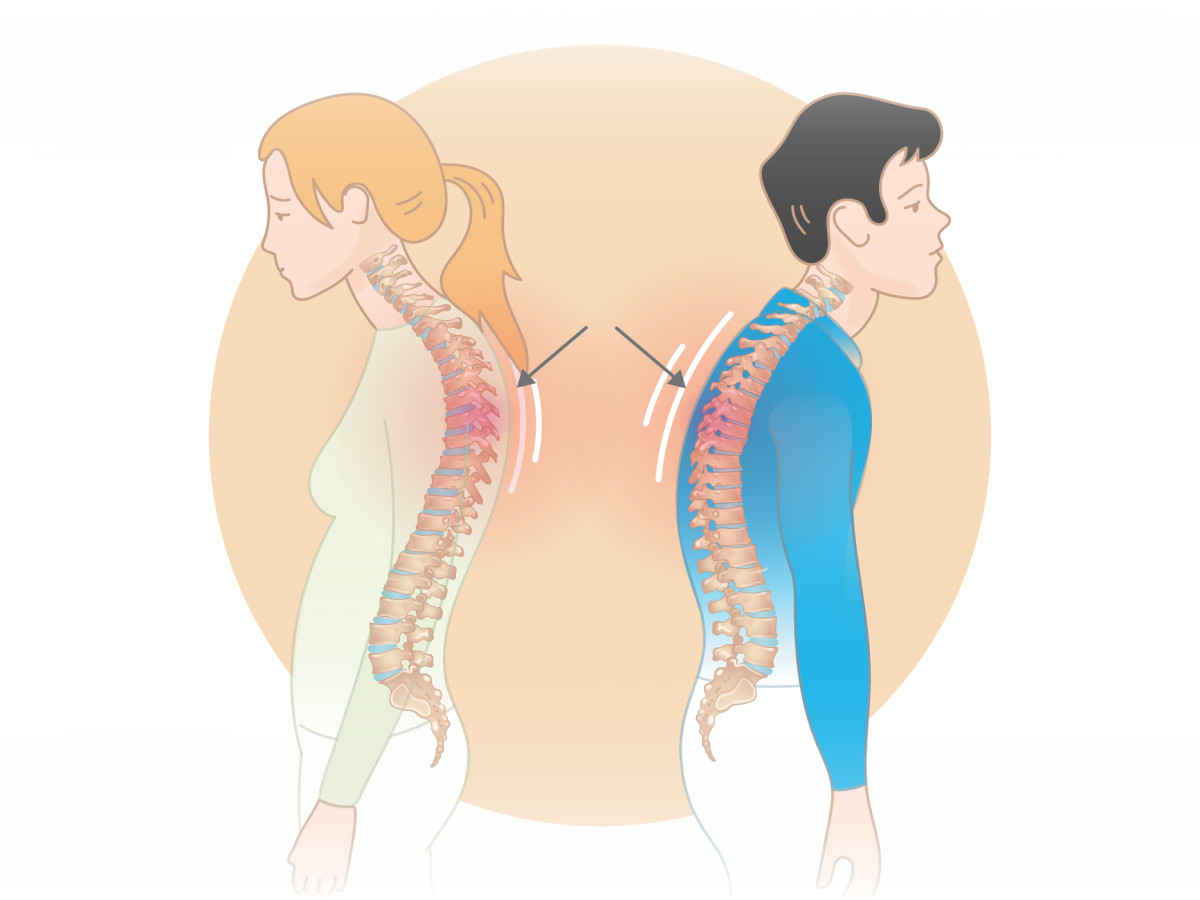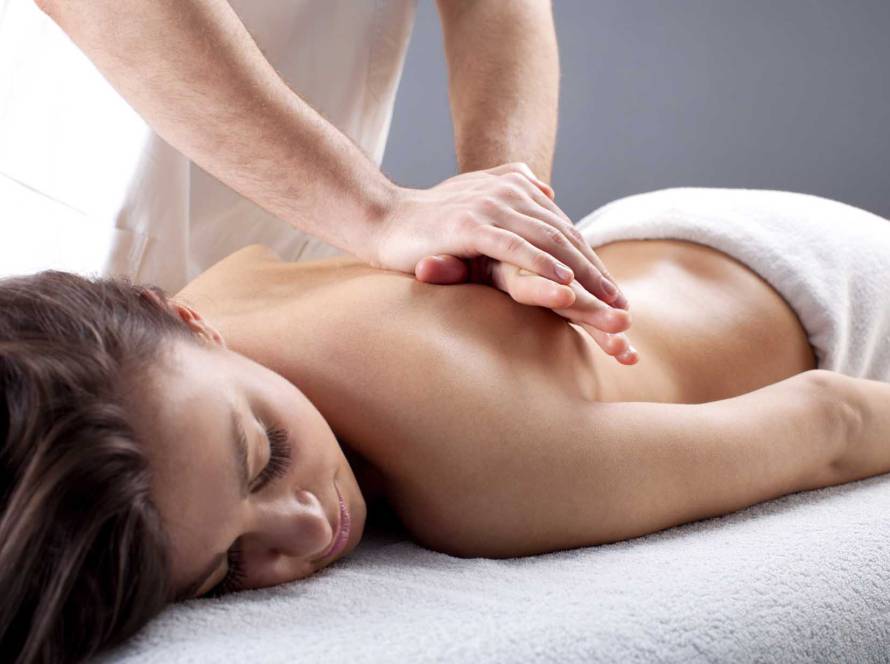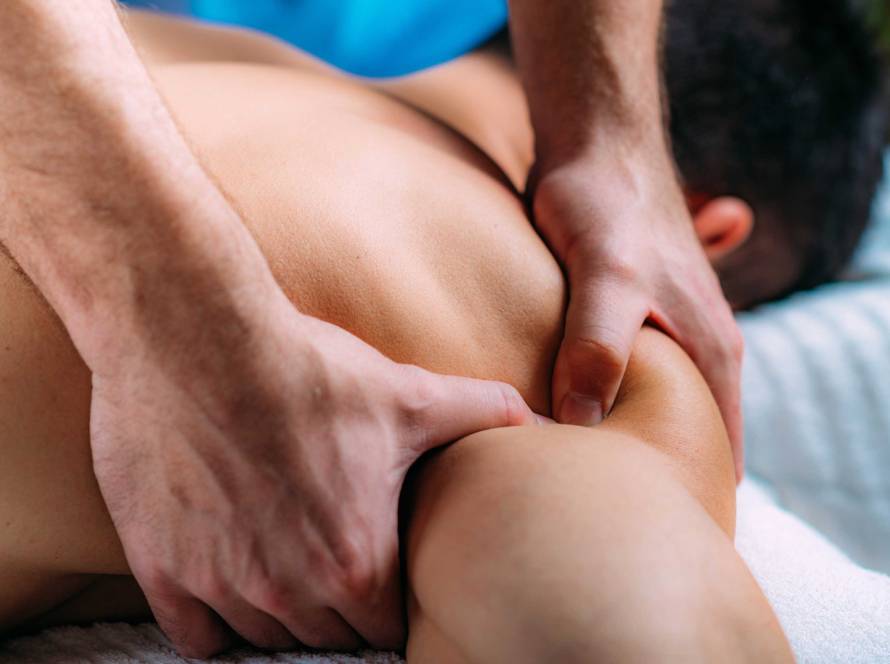Dowager’s Hump, otherwise referred to as a hunched back, is a condition characterized by a pronounced curvature in the upper back, often results from poor posture, osteoporosis, or spinal degeneration.
While massage therapy alone cannot completely “fix” this condition, it can significantly aid in managing symptoms and improving posture.
Focusing on the trapezius muscle is particularly beneficial in this regard.
Understanding the Trapezius Muscle in Relation to Dowager’s Hump
The trapezius is a large, diamond-shaped muscle that extends across the back of the neck and shoulders. It plays a vital role in moving and stabilizing the shoulder blades and neck.
When this muscle is tight or imbalanced, it can exacerbate the forward curvature of the spine seen in Dowager’s Hump.

Massage Techniques for the Trapezius Muscle
- Warm-Up Strokes: Begin with gentle effleurage (gliding strokes) to warm up the muscle. This increases blood flow and prepares the trapezius for deeper work.
- Kneading: Apply kneading techniques to work deeper into the muscle fibers. This helps in releasing knots and reducing muscle tension.
- Trigger Point Therapy: Identify and apply pressure to trigger points in the trapezius. These are tender or tight spots that contribute to muscle stiffness and discomfort.
- Stretching: Gently stretch the muscle to improve flexibility and range of motion. This can be done by the therapist during the massage or taught to clients for self-care.
Benefits of Massaging the Trapezius for Dowager’s Hump
Massage therapy targeting the trapezius muscle offers several benefits for individuals suffering from Dowager’s Hump, a condition marked by a noticeable curvature in the upper back.
This condition, often linked with poor posture or underlying spinal issues, can lead to discomfort and restricted mobility.
Massaging the trapezius muscle, which spans the neck, shoulders, and upper back, plays a pivotal role in managing and potentially alleviating some symptoms associated with Dowager’s Hump.
Reducing Muscle Tension
One of the primary benefits of trapezius massage in the context of Dowager’s Hump is the reduction of muscle tension.
The trapezius muscle, when tight or strained, can exacerbate the curvature of the spine associated with this condition.
By easing the tightness in this muscle through targeted massage techniques, there can be a noticeable reduction in the pull and strain on the spine and neck.
This relief of tension is not only crucial for comfort but also for preventing further progression of the spinal curvature.
Improving Posture
Regular massage therapy focused on the trapezius muscle can significantly aid in correcting muscular imbalances that contribute to poor posture – a key factor in the development and exacerbation of Dowager’s Hump.
Through consistent and targeted massage, the muscle is encouraged to relax and lengthen, which can help in realigning the shoulders and upper back.
This alignment is essential for achieving and maintaining an improved posture, ultimately aiding in the overall management of Dowager’s Hump.
Providing Pain Relief
Dowager’s Hump can be a source of considerable discomfort and pain.
Massaging the trapezius muscle offers a natural and effective way to alleviate this pain.
The therapeutic touch not only works on the muscle itself but also promotes overall relaxation and stress relief, which can further contribute to pain reduction.
Regular massage sessions can be a key component in a pain management strategy for individuals dealing with the discomforts associated with this condition.
Enhancing Mobility
The restricted range of motion in the shoulders and neck is a common issue for those with Dowager’s Hump.
Trapezius massage can play a significant role in increasing this range of motion.
By loosening the muscle and reducing stiffness, massage therapy enables greater movement in the shoulders and neck. This enhanced mobility is crucial not only for day-to-day activities but also for engaging in specific exercises and physical therapies aimed at addressing the underlying causes of Dowager’s Hump.
The Therapeutic Advantages of Trapezius Massage for Dowager’s Hump
While massage therapy, particularly focusing on the trapezius muscle, cannot cure Dowager’s Hump, it offers a range of benefits that can help manage and alleviate some of its symptoms.
Reduced muscle tension, improved posture, pain relief, and enhanced mobility are among the key advantages that make trapezius massage a valuable component in the overall treatment plan for individuals affected by this condition.
Complementary Therapies and Considerations
- Exercise and Physiotherapy: Combine massage with exercises and physiotherapy for comprehensive treatment. Strengthening and stretching exercises, especially for the back and core muscles, are crucial.
- Ergonomic Adjustments: Improving workplace ergonomics and adopting proper posture can prevent further progression of Dowager’s Hump.
- Professional Guidance: Always consult with healthcare professionals before starting any new treatment regimen, particularly for conditions like Dowager’s Hump.
Conclusion
While massage, particularly of the trapezius muscle, can be a beneficial part of managing Dowager’s Hump, it should be considered as part of a broader approach.
Combining massage with other therapies, exercises, and lifestyle modifications offers the best chance of improving posture and reducing discomfort associated with this condition.
Remember, consulting with healthcare professionals for personalized advice is always recommended.



